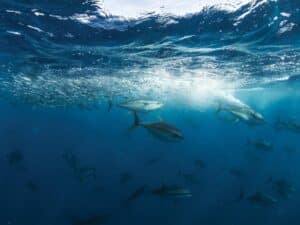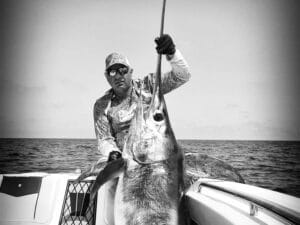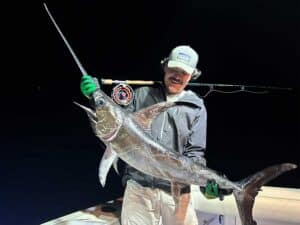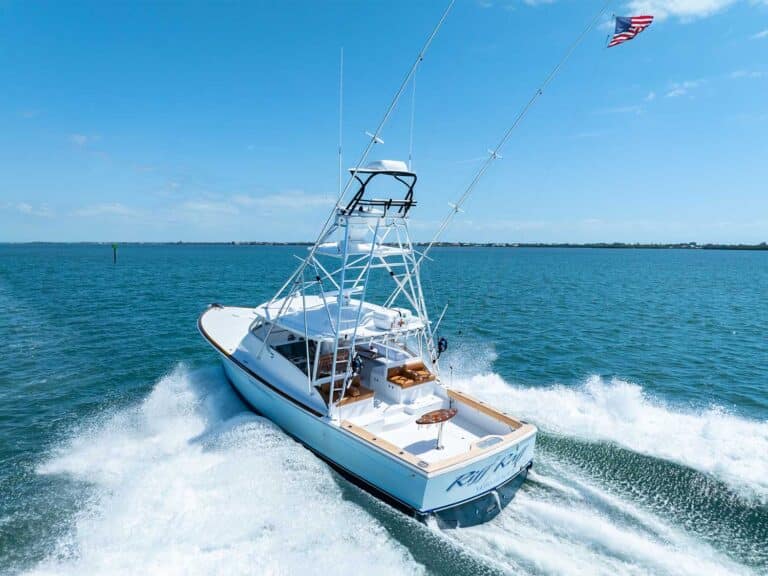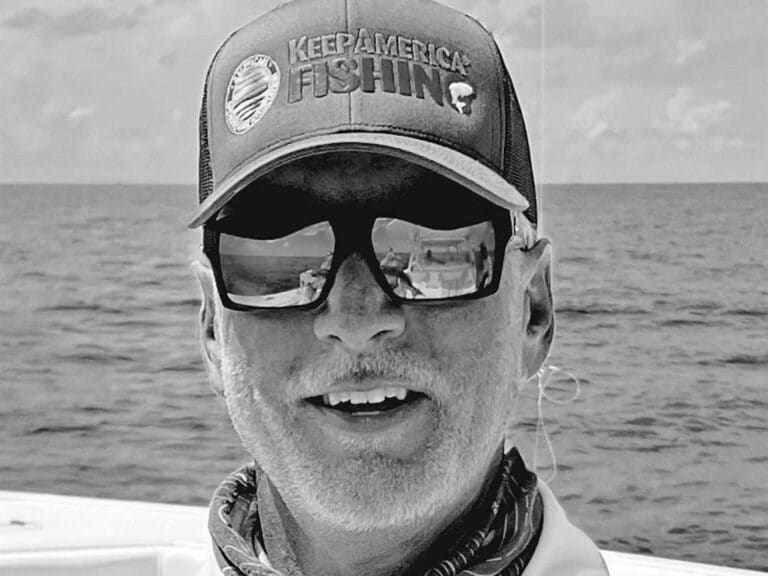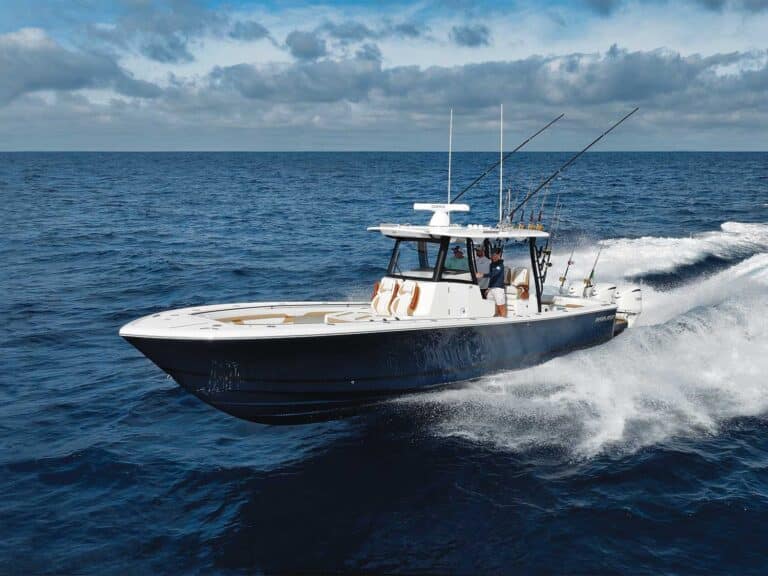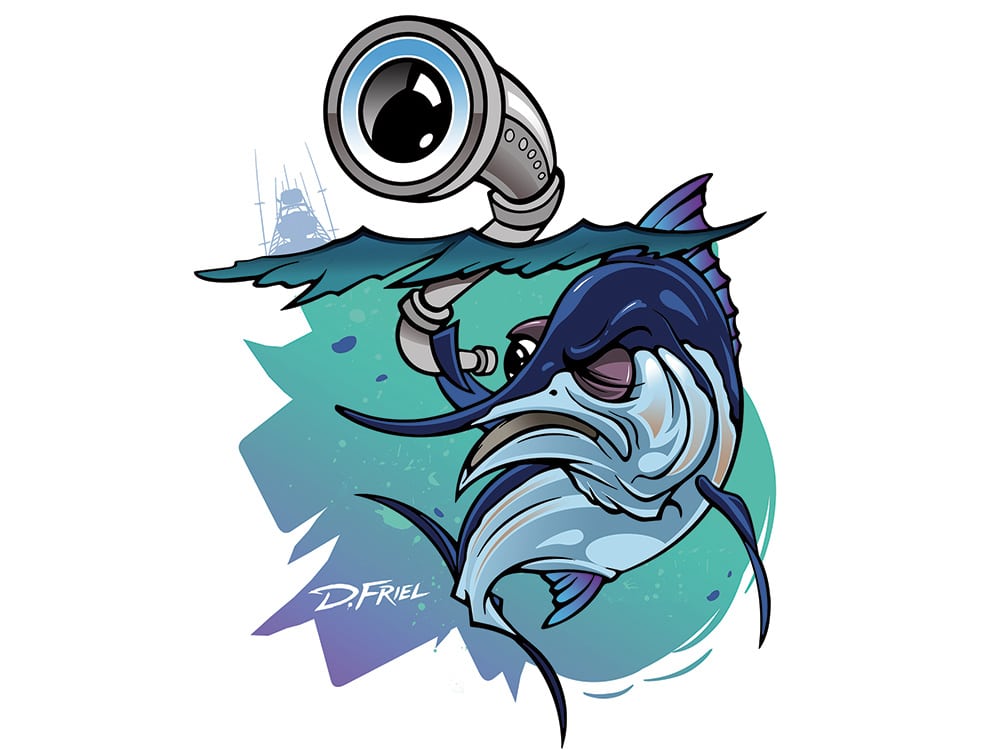
Most of us have marked billfish on our sonar equipment, and before we can turn around and tell the anglers and crew in the cockpit, “We just marked one!” a marlin or sailfish is eating a bait or teaser behind the boat.
When we mark a billfish at a depth of 120 feet and realize this fish saw something in our spread and swam to the surface that quickly is still amazing to me. With today’s incredible technology with these sonar units, some captains can tell the difference between a marlin and a sailfish just by the display alone.
Fishing the seamounts off Costa Rica this past summer, we marked quite a few blue marlin. On The Hooker, we have a new Garmin fish finder; in July, we were marking fish at 120 feet but not getting any bites. We happened to have Dr. Guy Harvey on board, so he jumped over the side on top of one of the seamounts with his scuba gear on. When he got to 50 feet, he said the water was solid green and the temperature dropped at least 10 degrees as he tried to go beneath it. He also said the current under the green water was moving so fast that he could not go any deeper. Maybe that explained why we were not getting bites from those fish.
The next month, we fished the same area, and every time we marked a fish at 120 feet, we got an instant bite. We were not marking that thermocline of green water at 50 feet either.
We did put six pop-up archival satellite tags in these blue marlin, and we are really looking forward to the information on how deep these marlin travel and where they are headed as they migrate each year.
In the 1980s, off Venezuela, long before dredges came along, we marked plenty of billfish, but we now know the dredges we use help us even more. We believe these fish see that large ball of bait near the noise of our boats, which they can feel with their lateral lines and other senses. After witnessing this incredible speed and sharp vision, the next question is: What colors do they see? According to the videos I see online and what I see on the boats fishing around me, it must be red squid and black mudflaps, because that’s about all I see hanging from the outriggers of the boats around me. For the surface teasers, you usually have one red and one green squid chain on each side of the boat.
I have noticed that in clear purple water, some people use more blue colors, and when the water is not so clean, they tend to use brighter colors. But one color that seems to do well in all conditions is black. Baitfish have silver bellies to hide them from predators below and dark backs to protect them from the birds circling above them. When a billfish looks up at a black dredge from below, it must stand out like a roach on a wedding cake! I am also amazed watching everyone’s underwater footage of billfish picking off individual baits from the dredges.
These fish are so precise, using their bill to carefully whack at the bait they choose. I have learned a lot from watching the tuna that follow the dredge too. On one particular video, I noticed that the tuna seemed to follow the dredge but not eat the surface baits. We were trolling around a school of small yellowfins one day without getting a bite, and I decided to prospect a bait by free spooling it back past the dredge — I caught a tuna right away using this technique. The other anglers did the same, and we caught quite a few doing this, while the surface baits did not get bit. So please keep posting these underwater videos! Personally, I enjoy trying new things and can’t stop wondering when and who will invent the next hottest thing to come along.
